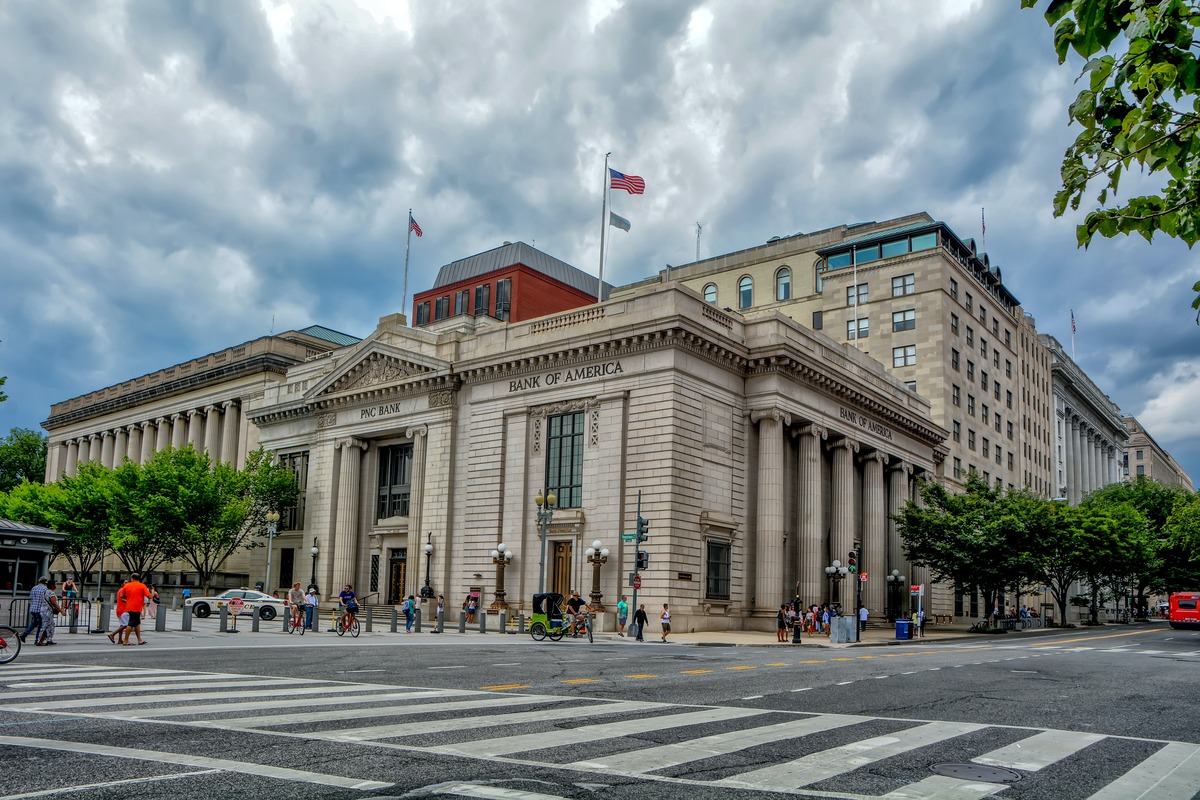According to a recent research report by Bank of America (BofA), tokenization can revolutionize financial and non-financial infrastructure and financial markets in the next five to 15 years.
The report highlights the transformative power of tokenization and its wide-ranging implications for various sectors.
Tokenization, an application of blockchain, involves converting real-world assets or rights into digital tokens on a blockchain network. These tokens represent ownership, value, or other rights, enabling secure and transparent asset tracking and transfer.
Bank of America’s Cryptocurrencies Research Team believes we are on the verge of a transformative infrastructure revolution that will redefine value transfer, settlement, and storage across all industries.
Tokenization Will Revolutionize the Digital Realm
Released on June 29, BofA’s research report emphasizes that tokenization could reshape how assets are managed and traded over the next decade. This technology has the potential to enhance efficiency, increase liquidity, and reduce transaction costs across a wide range of markets.
“The tokenization of traditional assets and issuance of assets in tokenized form have the potential to increase efficiencies and reduce costs across an asset’s life cycle, improve the efficient allocation of capital, optimize global supply chains, catalyze a new generation of software-as-a-service (SaaS) companies and ultimately drive mainstream adoption,” the analysts wrote.
In financial infrastructure, tokenization can streamline settlement, clearance, and custodial services. By digitizing assets and representing them as tokens, the traditional complexities associated with intermediaries and paperwork can be minimized, leading to faster and more efficient transactions.
Tokenization to Speed Up Adoption of Digital Assets, Said Bank Of America
Bank of America points out that historically, disruptive technologies such as radio, television, and email required approximately thirty years to achieve widespread adoption. However, the bank anticipates a significantly shorter timeframe for the mainstream adoption of digital assets.
According to the bank, implementing blockchain technology is expected to gain momentum rapidly among financial institutions and corporations. This acceleration is attributed to the rising opportunity cost of not leveraging the untapped efficiencies offered by this innovative technology.
“Distributed ledger technology and tokenized traditional assets aren’t ‘crypto,'” the report said, adding that “blockchains record the ownership of the 26k+ tokens that exist within the digital asset ecosystem, but we expect 99% of those in existence today to essentially disappear over the next ten years.”
The note elaborated on the various applications of tokenization in the digital realm. It acknowledged that specific tokens might lack inherent value but still manage to attract attention by representing a community’s value.
Examples of this phenomenon were given, such as memecoins like Shiba Inu (SHIB) and Pepecoin (PEPE), which garnered significant attention despite their lack of utility or intrinsic worth. However, the note recognized that other tokens do serve distinct purposes.
The report emphasized that certain digital assets, even if they don’t possess intrinsic value, are essential due to the emergence of public permissionless blockchains like Bitcoin, Ethereum, and some third-generation blockchains. These decentralized networks require tokens as incentives for participants involved in processing transactions within the network.
According to a recent research report by Bank of America (BofA), tokenization can revolutionize financial and non-financial infrastructure and financial markets in the next five to 15 years.
The report highlights the transformative power of tokenization and its wide-ranging implications for various sectors.
Tokenization, an application of blockchain, involves converting real-world assets or rights into digital tokens on a blockchain network. These tokens represent ownership, value, or other rights, enabling secure and transparent asset tracking and transfer.
Bank of America’s Cryptocurrencies Research Team believes we are on the verge of a transformative infrastructure revolution that will redefine value transfer, settlement, and storage across all industries.
Tokenization Will Revolutionize the Digital Realm
Released on June 29, BofA’s research report emphasizes that tokenization could reshape how assets are managed and traded over the next decade. This technology has the potential to enhance efficiency, increase liquidity, and reduce transaction costs across a wide range of markets.
“The tokenization of traditional assets and issuance of assets in tokenized form have the potential to increase efficiencies and reduce costs across an asset’s life cycle, improve the efficient allocation of capital, optimize global supply chains, catalyze a new generation of software-as-a-service (SaaS) companies and ultimately drive mainstream adoption,” the analysts wrote.
In financial infrastructure, tokenization can streamline settlement, clearance, and custodial services. By digitizing assets and representing them as tokens, the traditional complexities associated with intermediaries and paperwork can be minimized, leading to faster and more efficient transactions.
Tokenization to Speed Up Adoption of Digital Assets, Said Bank Of America
Bank of America points out that historically, disruptive technologies such as radio, television, and email required approximately thirty years to achieve widespread adoption. However, the bank anticipates a significantly shorter timeframe for the mainstream adoption of digital assets.
According to the bank, implementing blockchain technology is expected to gain momentum rapidly among financial institutions and corporations. This acceleration is attributed to the rising opportunity cost of not leveraging the untapped efficiencies offered by this innovative technology.
“Distributed ledger technology and tokenized traditional assets aren’t ‘crypto,'” the report said, adding that “blockchains record the ownership of the 26k+ tokens that exist within the digital asset ecosystem, but we expect 99% of those in existence today to essentially disappear over the next ten years.”
The note elaborated on the various applications of tokenization in the digital realm. It acknowledged that specific tokens might lack inherent value but still manage to attract attention by representing a community’s value.
Examples of this phenomenon were given, such as memecoins like Shiba Inu (SHIB) and Pepecoin (PEPE), which garnered significant attention despite their lack of utility or intrinsic worth. However, the note recognized that other tokens do serve distinct purposes.
The report emphasized that certain digital assets, even if they don’t possess intrinsic value, are essential due to the emergence of public permissionless blockchains like Bitcoin, Ethereum, and some third-generation blockchains. These decentralized networks require tokens as incentives for participants involved in processing transactions within the network.
